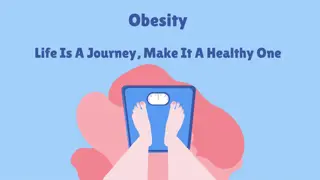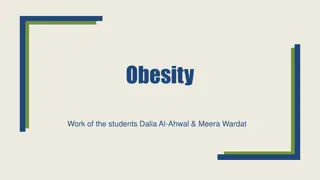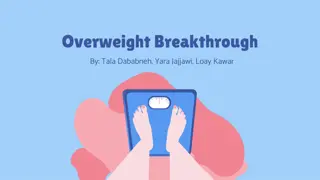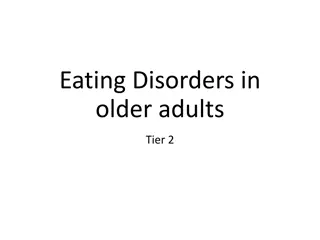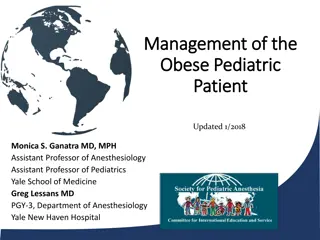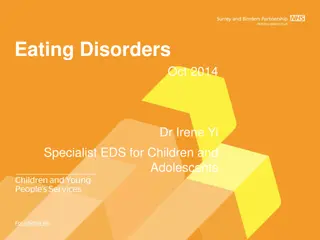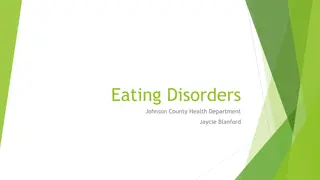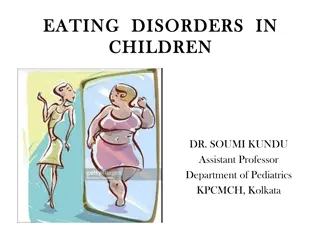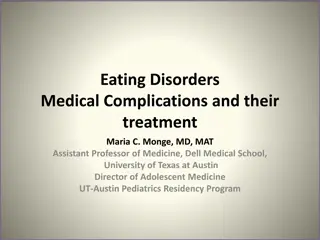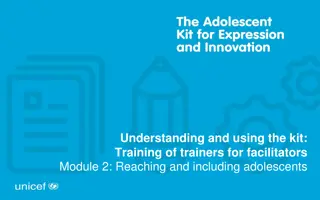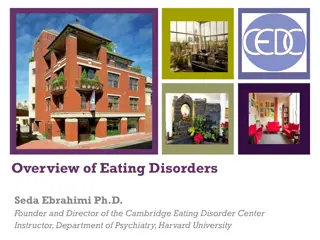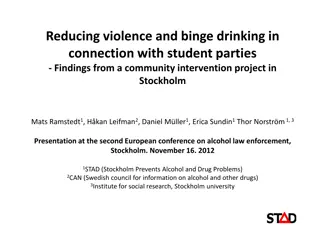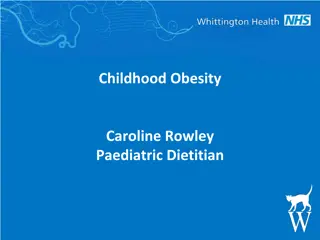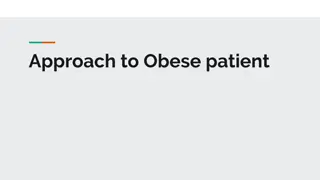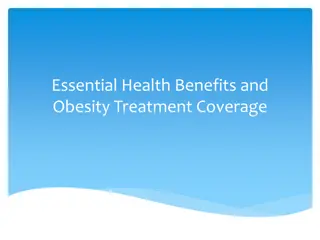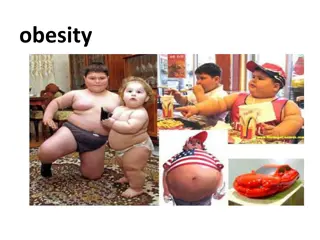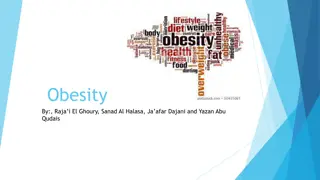Understanding Binge Eating in Children and Adolescents: Implications for Obesity Practitioners
Conceptualizing binge eating in young individuals involves criteria like loss of control over eating and the amount of food consumed. The prevalence of binge eating varies based on definitions and assessment methods, with non-treatment seekers showing lower rates than treatment seekers. The development of binge eating is linked to theories involving cognitive behavioral factors and interpersonal vulnerabilities. Longitudinal studies suggest that binge eating predicts weight gain, eating disorder attitudes, and psychopathology over time. Practitioners should include binge eating in screenings, consider psychosocial characteristics, and refer for specialized psychological treatment.
Download Presentation

Please find below an Image/Link to download the presentation.
The content on the website is provided AS IS for your information and personal use only. It may not be sold, licensed, or shared on other websites without obtaining consent from the author. Download presentation by click this link. If you encounter any issues during the download, it is possible that the publisher has removed the file from their server.
E N D
Presentation Transcript
To binge or not to binge? (Goossens & Braet) Conceptualization of binge eating: 2 main criteria -Loss of control over eating (LC) -Amount of food that was eaten during the episode: objectively (OBE) versus subjectively (SBE) large LC seems most important criterion: associated with elevated levels of eating- and psychopathology and poor quality of life in obese children and adolescents ( adds to burden of obesity) As a symptom or part of a syndrome (eating disorders) Reliable and validated instruments to assess OBE and SBE: ChEDE-Q for screening, ChEDE for diagnoses
To binge or not to binge? (Goossens & Braet) Prevalence of LC in obese children and adolescents Differences accross studies, depending on: - definition: OBE vs. LC - instruments: self-report vs. Clinical interview - sample: normal weight vs. overweight; treatment seeking vs. non- treatment seeking Interesting trends - non-treatment seekers: 14.6 20% - treatment seekers: up to 36% - associated with higher degree of overweight - gender and age differences less pronounced
To binge or not to binge? (Goossens & Braet) Development and maintenance of binge eating: two main theories - Cognitive Behavioral Theory: Role of concerns about eating, weight and shape and dietary restraing - Interpersonal Vulnerability Theory: Role of insecure attachment, social problems, low self-esteem, and affective dysregulation cross-sectional, experimental and longitudinal evidence for the role of these psychosocial variables Important to include these variables in psychological assessment of obesity
To binge or not to binge? (Goossens & Braet) Course and prognosis of binge eating: < few longitudinal studies - BE predicts increased weight gain over time - BE predicts increased eating disorder attitudes and even partial of full blown binge eating disorder - BE predicts increased psychopathology (anxiety, depression)
To binge or not to binge? (Goossens & Braet) Implications for obesity practitionners: - Binge eating (BE) may serve as important component of screening and treatment of overweight in children and adolescents - Also crucial to be alert for psychosocial characteristics of BE: dietary intentions, emotional eating, low self-esteem, social isolation - Timely referring for more in-dept assessment and treatment by specialized psychologist





